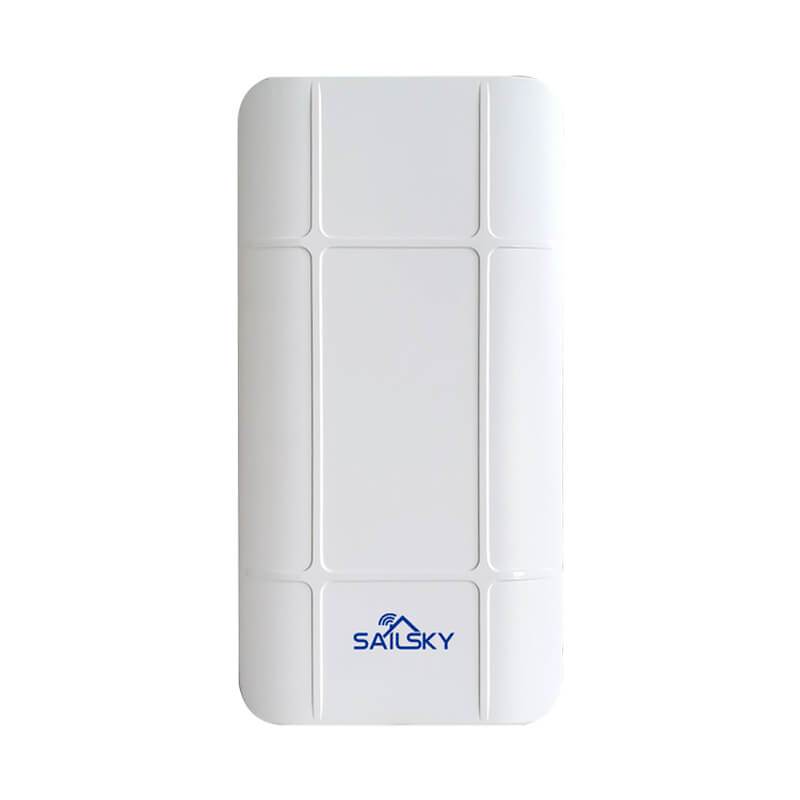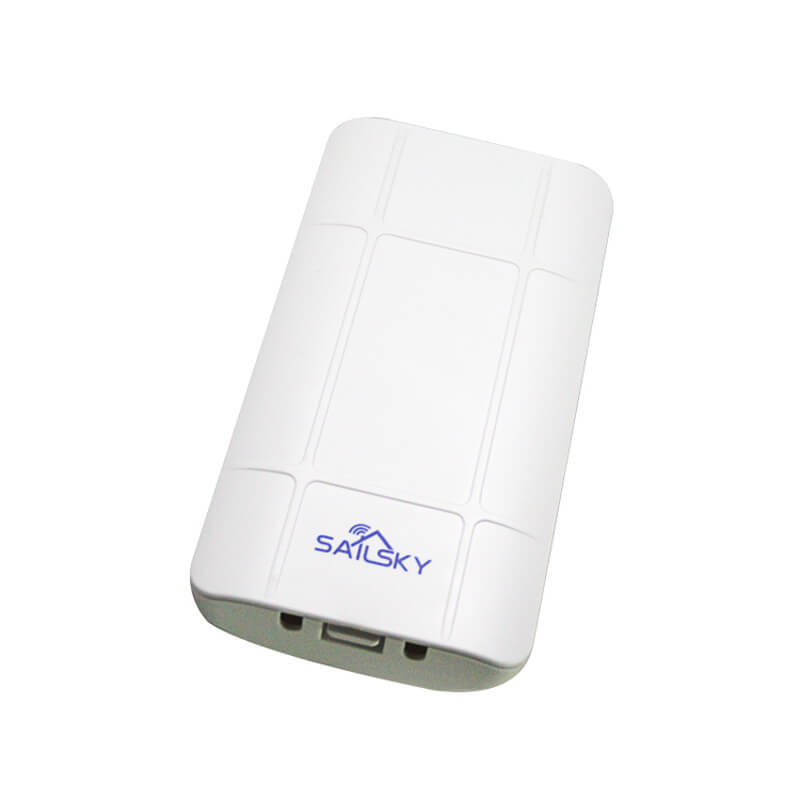What is a Wi-Fi bridge and how does a 2.4GHZ signal Repeater work?
2022.09.05 / By Sailsky
The Sailsky Wi-Fi bridge 2.4ghz signal repeater provides the task of extending your Wi-Fi signal to your liking by connecting it to your network. the bridge acts as a connection between two smaller networks to create a larger one. Are you not sure how this would work? Keep reading the following paragraphs in order to understand how.

How Does the Operation of a Wireless Bridge Take Place?
With the assistance of a solution known as a wireless bridge, which is literally a bridge between two networks, it is possible to unite two networks, or more accurately, two network segments, through a wireless channel. This is accomplished by joining two network segments. With the assistance of wireless bridges, it is possible to connect the networks located in various buildings that are part of the same campus, as well as those located in shipping and manufacturing facilities located in nearby districts or cities, offices located across the street, and so on. There are times when people will refer to a wireless bridge as a Wi-Fi bridge.
Wireless bridges utilize microwave or optical/laser links to transmit radio waves between two access points in order to establish a connection. They use antennae to connect to conventional IP networks and also to send and receive wireless signals. They connect to standard IP networks using antennae. A lot of the time, antennae is quite directed. A wireless link between two IP networks is created as a consequence of this action.
Benefits Associated with Using Wireless Bridges A virtual private network (VPN) connection cannot be utilized, and a hardwired connection is also not an option because a physical connection is necessary.
Not only is it difficult and expensive to build up your own long-distance wired infrastructure, but there is also a possibility that you cannot due to technical constraints. It is also possible that a number of permissions from the appropriate restrictive bodies will be required. In a nutshell, a wireless bridge is often required when no alternative solution can be implemented due to practical constraints.
However, there are situations in which a wireless bridge is an ideal option due to considerations such as cost, legality, business objectives, performance, or the capacity for maintenance.
Most common uses for wireless bridges
- In addition to the high expense of leased lines, virtual private networks (VPNs) are unworkable because of issues with bandwidth, latency, security, and compliance.
- In the event that either of the two locations does not have access to a rapid network connection, such as the Internet or a line that can be leased, then a hardwired connection cannot be established between the two locations.
- Electrical interference, such as that caused by industrial equipment, makes it difficult to establish Ethernet connections; meanwhile, laying fiber optic cables across large distances is either impractical or prohibitively expensive.
- It is conceivable for you to set up a wired connection; however, it is likely that you will either not be able to do it fast or that you will not be utilizing it for a period of time that is sufficient to warrant the expense.
- Hardwired connections cannot be installed due to a number of legal and technical obstacles, such as when one of the parties to the connection refuses to allow installation, when cables must be laid across terrain that is unsuitable or inaccessible, or when they must be buried in areas that are densely populated.
What is a Wi-Fi signal repeater?
The term “signal repeater” is used in the field of wireless communications to refer to any one of several distinct kinds of bi-directional amplifiers (BDAs). These types of amplifiers include cellular repeaters and wireless cellular signal boosters. It is a device that can improve Wi-Fi coverage in a particular location. This configuration can be found in the device. These are quite similar to the cellular broadcast towers that network providers use but on a much smaller scale. They are often erected in a single building for the benefit of a single tenant and look very similar to those towers.
Modern repeater amplifiers replay cellular signals from the exterior of the building in order to improve the coverage of service inside the building. These methods frequently involve the use of an external, directional antenna to pick up the signal from the surrounding area, transfer it to an amplifier unit to be amplified, and then retransmit the signal locally. This is done in order to improve the coverage of wireless networks. In addition, many of the more recent models are built with the capability of amplifying signals coming from a number of different cell towers all at the same time. Creating products and services that can be used in a variety of contexts.

How does a Wi-Fi signal repeater work?
Installing a wireless repeater at a location where it can get a signal from the primary wireless router is necessary for the device to function properly. It takes the relatively weak Wi-Fi signal that is transmitted from the router, amplifies it, and then transmits it further. At first sight, it might not seem like it, but Wi-Fi routers actually consist of two separate wireless routers. The wireless signal is picked up by both of the routers, but only one of them amplifies it before passing it on to the other. After that, the signal will be transmitted by the second router. Remember that even though the signal from the repeater will be just as powerful as the signal from the primary router, reaction time and latency will inevitably rise. This is something that you should keep in mind.
Now that you are completely aware of how a Wi-Fi bridge and signal repeater works, you can employ one if you need to extend your wireless connection. Get the Sailsky Wi-Fi bridge 2.4ghz signal repeater to extend your signals with no trouble.

